The content of this article is mainly based on framework output, and the case sharing is relatively simple. I hope it can help readers form a thinking framework for new product solutions; the content is suitable for students who are beginners in e-commerce data analysis or operations;

The Spring Festival is approaching, and e-commerce businessman Jing Ge is looking at the calendar, eyeing the holiday, when suddenly the director's shout rings in his ears: "Stop drooling, wake up quickly, the demand for new products is coming, and we must provide new products before the holiday." plan!"
What? Classmate Jing Ge’s lips were trembling, and she was about to cry but had no tears. She looked at the Spring Festival in less than two weeks and was counting her fingers. How could this time be enough? Gritting his teeth and being ruthless, he thought he was a worker from Party B. Forget it, forget about the sweet dream of taking a leave of absence years ago.
Friends, have you ever been like Mr. Jingge? Party A’s needs were unexpected and time was tight. What should you do? The only way is to quickly adjust your psychological expectations and complete the new product plan as soon as possible. Back to the topic, let’s take a look at how Jingge students came up with this new product plan?
There are 5 steps in total, and this article will unfold them one by one:
01 Confirm specific requirements and output information collection form
When we receive new requirements, remember to clarify the requirements, in other words, the problem. Above, what Jingge is trying to do is a new product plan, so let’s start thinking around new products. We can use the 5w2h analysis method to ask questions, such as:
- What does the new product look like? (what)
- What is the purpose of launching new products? (why)
- Which department is responsible for the operation of this new product? Who is the benchmark for new products? (who)
- When will new products be released? (when)
- On what channels will new products be re-launched? (where)
- How to make new products popular? (how)
- How much does it cost to market new products? (how much)
The above questions are an enumeration of the 5w2h method, and are subject to actual scenarios encountered. Jingge asked these questions to confirm with the brand customer. After confirmation, an information collection form needs to be provided to the brand. What is the use of the information collection form?
Further clarify the information communicated by both parties, and supplement relevant information, such as the new GMV (gross merchandise transaction) target for this launch, the intensity of new product discounts, and new relevant data in history.
02 Draw a mind map framework based on new product information
Based on the information obtained, Jing Ge began to create the mind map framework of [Little Red Flower New Year]. The details are as follows:
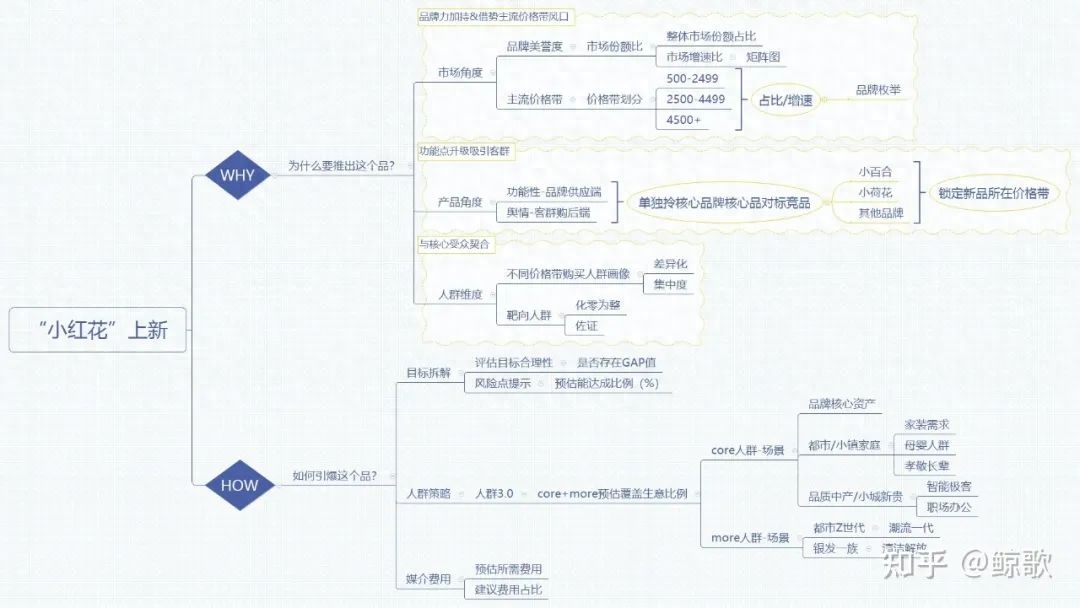
Due to time constraints, the brain map framework is relatively simple, mainly focusing on Why and How. The former answers "Why do we launch this product" and the latter answers "How do we detonate this product".
- For Why, we started from three perspectives, namely market perspective, product perspective and crowd perspective, proving that new product introduction is in line with the company’s development strategy and caters to customers’ psychological demands.
- Similarly, How is also developed from three dimensions, namely GMV target breakdown, crowd strategy and media cost forecast, telling brand customers the specific breakdown of goals, potential risk points, and what kind of crowd they need. and forecasting the marketing expenses required to achieve goals.
After the mind map framework is built, don’t forget to confirm with the brand customer. Do you need to add or delete details?
03 Collect and summarize data according to the brain map framework
When the brain map framework is confirmed to be correct, Jing Ge can get started. In this process, from the perspective of data analysis steps, it includes three major steps: understanding data, data cleaning and data analysis.
For details of the three major steps, please refer to the figure below:
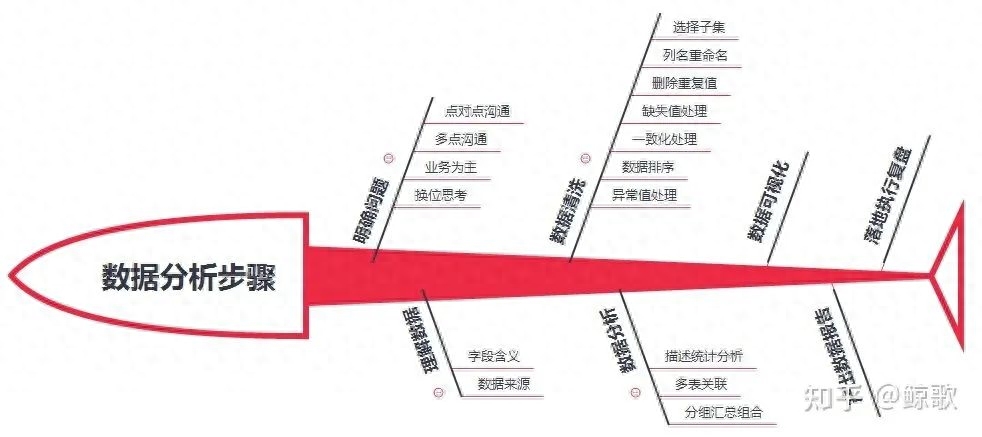
If you are interested in the data collection, cleaning and summary of the plan, you are welcome to discuss it with me. I will not go into details here. You can take a look at the series of articles I have written before.
04 Refining the core conclusions and producing a PPT plan
Considering the length of the article, I will share the crowd strategy part here. I hope it can inspire you.
Crowd operation strategy: Carry out insight analysis based on the brand’s existing purchasers (with similar products at the same price) as seed users, extract core tags, and then overlay the buyers’ associated category preferences to refine and integrate them into two types of target groups. : Core crowd (core crowd + core scene) and more crowd (out-of-circle crowd + out-of-circle scenario), and finally the target group is extracted from the platform traffic pool and repeatedly reached through advertising and marketing to guide in-store conversions, thereby achieving the popularity of new products.
① Find new products with similar history as reference objects, analyze the buying population, and extract important tags that affect purchasing decisions to provide reference for new products.
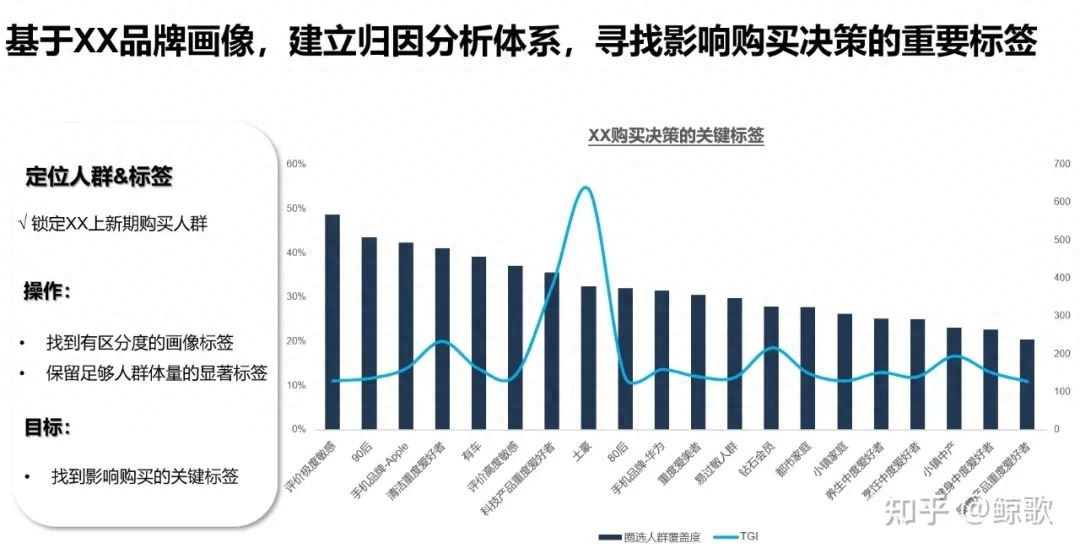
② Based on historical data insights, clarify the core target audience (TA) of the new product, and further break it down into key tags, such as gender, age, region, consumption power, and aggregate tags provided by the platform.
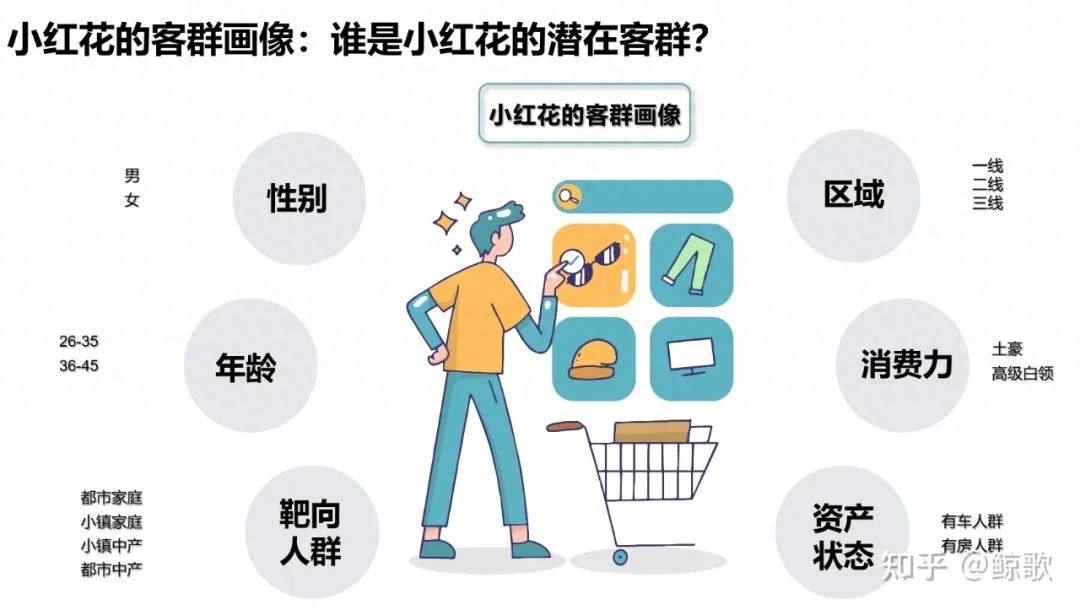
③ Conduct preference analysis on core categories. In the entire platform ecosystem, customer purchase categories will have a cascading effect, such as the widely circulated case of beer diapers. Then while studying the characteristics of new products, you can also clearly divide related categories to improve the accuracy of radiation within the target audience.
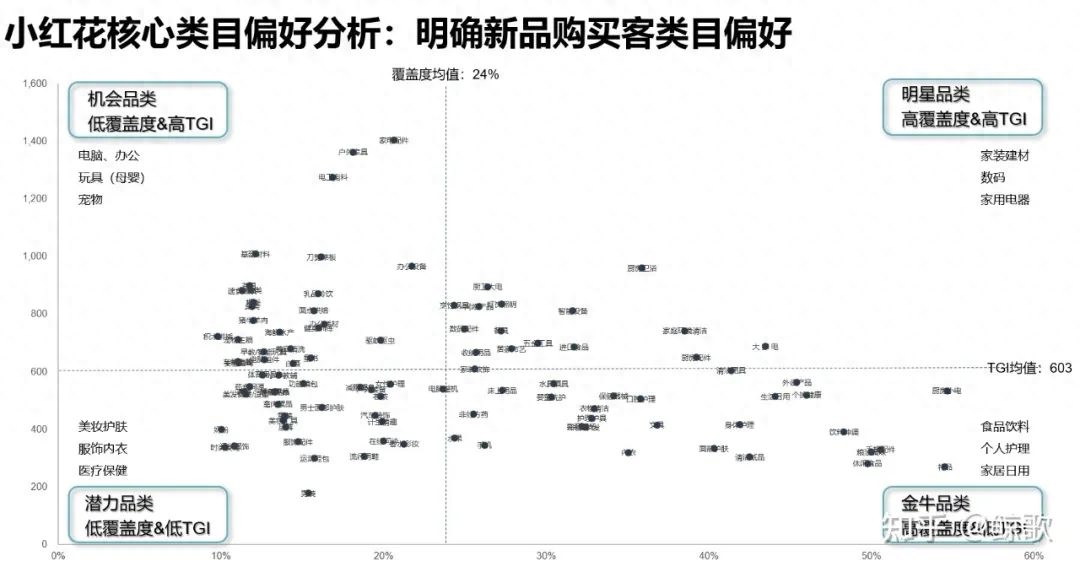
④After completing the previous two steps, we will further summarize and integrate and extract four categories of people: core crowd, core scene, group breaking crowd and group breaking scene. The first two categories can be defined by core, and the latter two categories can be defined by more. definition. Behind the definitions of core and more, it means the order of reaching the group priority and the proportion of marketing expenses.
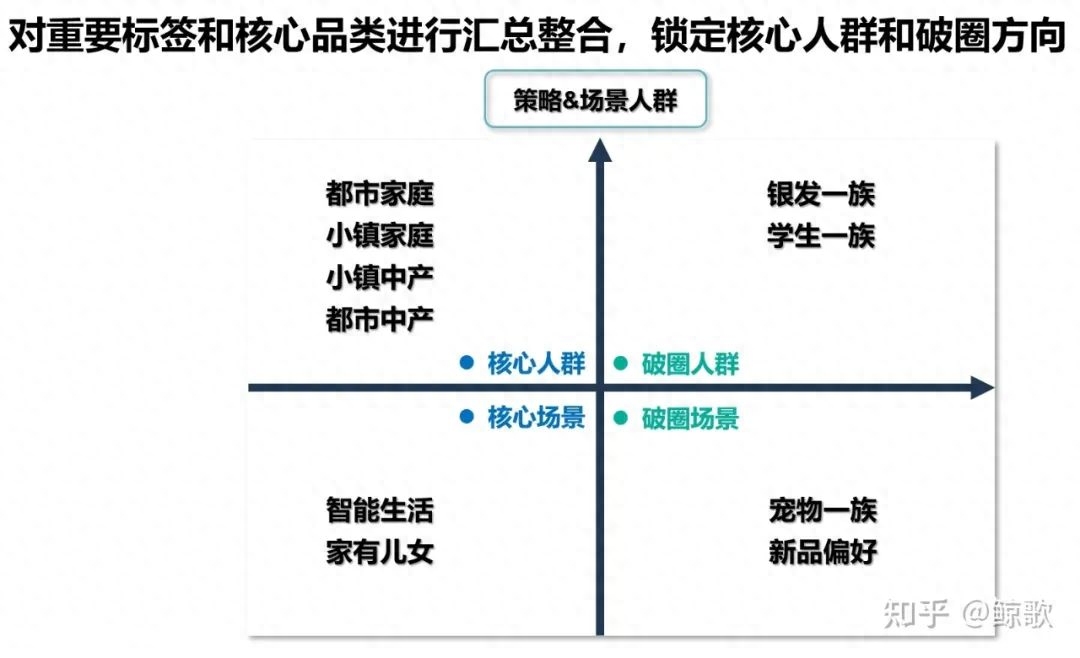
⑤Finally, we superimpose the corresponding magnitude, priority order and historical business coverage of the crowd, sort the crowd hierarchically, form a pyramid shape, and comprehensively obtain the estimated contribution ratio of the entire pyramid crowd to new product business.
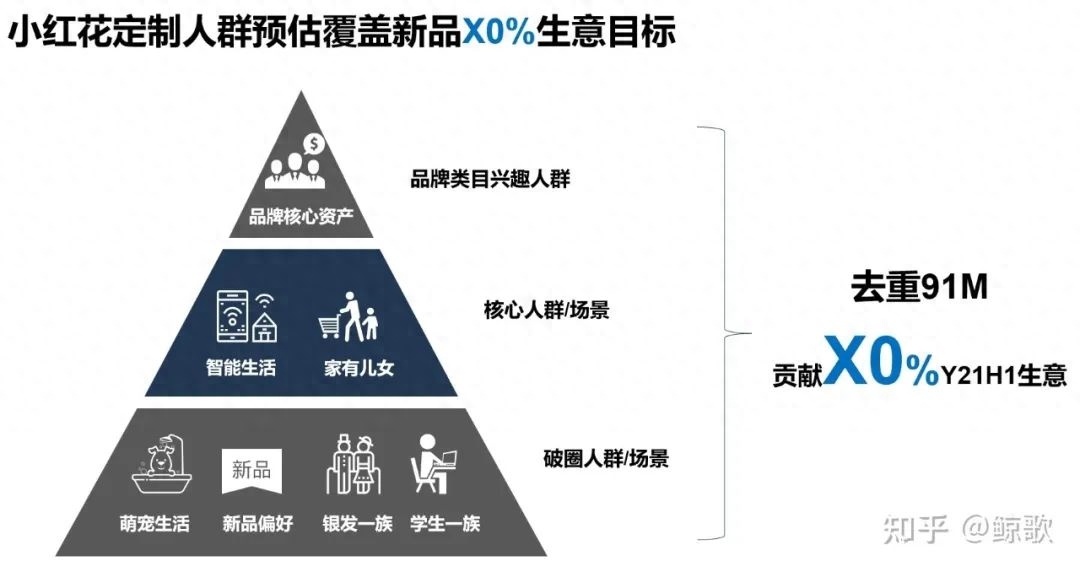
To be precise, the estimated business contribution ratio will fall within a range, rather than being a relatively accurate forecast value. The specific value here refers to the historical contribution value of new products.
05 Output PPT plan, adjust and optimize the final version
The visual expression of the plan varies from person to person, but attention should be paid to the transformation from the author's logic to the reader's logic, and the views can be clearly listed. Even if there is no real person to interpret, the reader can understand the orderly and focused expression of the entire plan through reading.
Before the plan is finalized, it will go through repetitive steps of adjustment and optimization, so we need to be patient with every modification.
06 end
Finally, Jing Ge will give you a brief review. You can keep the following three points in mind:
- Clear the 5 major steps, confirm the needs → draw a brain map → process the data → form a visualization plan → output the final plan;
- Make good use of the 5w2h analysis method to clarify the needs, you can use Xmind and Curtain Wait for the brain map framework to be drawn;
- Open up brainstorming strategies, the plan can be step-by-step, and use historical data to conduct insight verification, etc.;
This article focuses on teaching you how to quickly start making a new product solution. Due to space limitations, many contents are not discussed in detail. If you are interested, we can discuss it further.
Author: Whale Song
This article was originally published by @ a data person’s private space on Everyone is a Product Manager. Reprinting without permission is prohibited.
The title picture comes from Unsplash and is based on the CC0 license.
The opinions in this article represent only the author's own. The Renren Product Manager platform only provides information storage space services.
Articles are uploaded by users and are for non-commercial browsing only. Posted by: Lomu, please indicate the source: https://www.daogebangong.com/en/articles/detail/shu-ju-fen-xi-yi-wen-dai-ni-kuai-su-shang-shou-zuo-xin-pin-fang-an.html

 支付宝扫一扫
支付宝扫一扫 
评论列表(196条)
测试